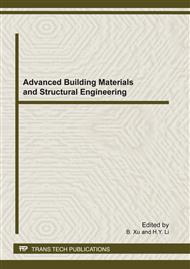[1]
J. R. Dyni, Geology and resources of some world oil shale deposits, Oil Shale, 20(2003) 193-252.
DOI: 10.3176/oil.2003.3.02
Google Scholar
[2]
Q. Wang, J. R. Bai, B. Z. Sun, Strategy of Huadian oil shale comprehensive utilization, Oil Shale, 22(2005) 305-316.
DOI: 10.3176/oil.2005.3.05
Google Scholar
[3]
J. Ibarra, A. Bonet, R. Moliner, Release of volatile sulfur compounds during low temperature pyrolysis of coal, Fuel, 73(1994) 933-939.
DOI: 10.1016/0016-2361(94)90290-9
Google Scholar
[4]
C. Ni, Gas chromatography and determination of mercury trace COS and H2S, Chemical Industry and Engineering, 24(2003) 35-36.
Google Scholar
[5]
M. Ziyad, J. Garnier, M. Halim, Nonisothermal kinetics of H2S and H2 generation from Timahdit oil shale, Fuel, 65(2008) 715-720.
DOI: 10.1016/0016-2361(86)90370-4
Google Scholar
[6]
Y. Zhao, Y. He, Utilization of retort gas as fuel for internal combustion engine for producing power, Oil Shale, 22(2005) 21-24.
DOI: 10.3176/oil.2005.1.03
Google Scholar
[7]
X. M. Jiang, X. X. Han, Z. Cui, Mechanism and mathematical model of Huadian oil shale pyrolysis. Journal of Thermal Analysis and Calorimetry, 86(2006) 457-462.
DOI: 10.1007/s10973-005-7065-1
Google Scholar
[8]
Q. R. Liu, Pyrolysis of coal conversion and desulfurization [PhD thesis], Dalian, Dalian University of Technology, (2006) 13-14.
Google Scholar
[9]
O. AL-ayed, M. Matouq. Influence of pyrolysis environment on liquid product and sulfur of oil shale. Energy Sources, Part A: Recovery, Utilization and Environmental Effects, 31(2009) 679-686.
DOI: 10.1080/15567030701752529
Google Scholar


